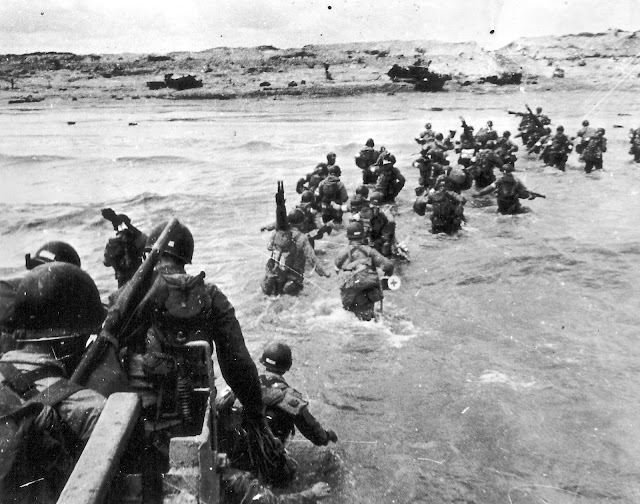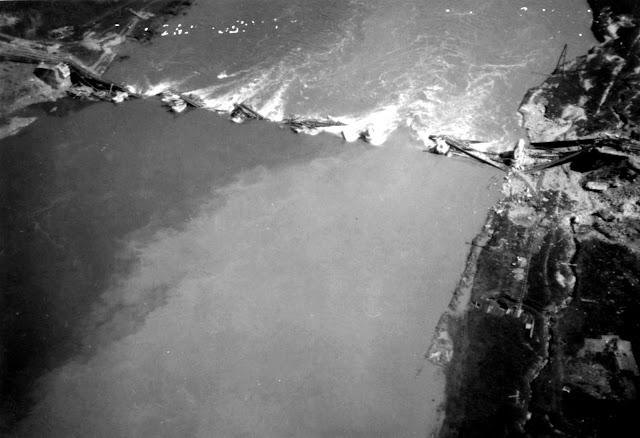PFC. JOSEPH T. COSTELLO, WWII: Teen lost life in Battle of Mindanao
 Troops of Pfc. Joseph T. Costello's 162nd Infantry Regiment land on the southwest tip of the Zamboanga Peninsula on the island of Mindanao, Philippines on March 10, 1945. Costello would lose his life in the campaign eight days later. (U.S. Army Signal Corps photo)
Troops of Pfc. Joseph T. Costello's 162nd Infantry Regiment land on the southwest tip of the Zamboanga Peninsula on the island of Mindanao, Philippines on March 10, 1945. Costello would lose his life in the campaign eight days later. (U.S. Army Signal Corps photo)
He was killed in action during the Battle of Mindanao in the Philippines on the eighth day of the ultimately five-month Operation VICTOR IV campaign ordered by Gen. Douglas MacArthur to clear the southern Philippines of Japanese occupation forces. The offensive began on March 10, 1945 with an amphibious landing by Costello’s 162nd Infantry Regiment of the 41st Infantry Division near Zamboango on the Zamboanga Peninsula of Mindanao island, capturing the objective without much opposition. But the story changed the next day.
On March 11, the 162nd fought its way north and west to clear its assigned portion of the peninsula and Pfc. Costello fell seven days into the offensive.
He was sophomore class president and senior class vice president at Irvington High, played center on the Bulldogs football team for three seasons and managed the high school baseball team.
He was survived by a brother, John Larkin, 11, and a sister, Elizabeth Mary (Betty), 15, his father, Joseph Aloysius and mother the former Mary Elizabeth McGovern. Joseph, the father, was the oldest of eight children, all born and raised in Irvington. He worked as a carpenter, primarily in the building trade. Mary emigrated to the U.S. from Ireland at age 15 in 1912
Pfc. Costello's father had served overseas from Sept. 20, 1918 to Jan. 11, 1919. His actual wartime deployment was seven weeks before World War I ended on Nov. 11, 1918.
Pfc. Costello's remains were returned to the U.S. in 1948 and he was laid to rest on Sept. 17, 1948 at Sleepy Hollow Cemetery. Veterans of Foreign Wars Irvington Post 2911 and American Legion Dobbs Ferry members formed an honor guard as Taps was played. A requiem Mass was held for him at Irvington’s Immaculate Conception Catholic Church where he was a parishioner.
Links to similar personal stories about Irvington heroes who gave their lives for their country*
◼ Pfc. Cuthbert Powell Sinkking: Class of '42 gave 3 of its own to the ages
◼ Pfc. John Joseph (Joe) Gilchrist: Died after capture of Saint-Lo
◼ Lt. (j.g.) George Eddison Haines: Lost at sea, awarded Silver Star
◼ Pfc. Joseph Thomas Costello: Teen lost life in Battle of Mindanao
◼ MSgt. James Peter Kelley: Survived WW II and Korea; died in fall
◼ S1 Archibald Ronald: Lost on next-to-last Navy ship sunk by U-boat
◼ TSgt. Raffaele R. (Ralph) Reale: A hero's life ended on East Sunnyside Lane
◼ Sgt. Robert F. Morrison: Took fight to the enemy, fell in Alsace
◼ Lt. Col. George W. Beavers Jr.: Re-upped as private; died on war's eve
◼ F2 Claude L. Bronnes: Went down with the Atlanta at Guadalcanal
◼ MMLC William James Downey: Died aboard ship off West Coast
◼ Pvt. Alick Main Ian: Died taking Aachen, first German city to fall in WWII
◼ Pfc. George Mills Hill Jr.: Survived Okinawa, only to fall in South Korea
◼ Pvt. Peter R. Robinson: Lost to shadows of time over Pacific, answers never found
WORLD WAR I










Comments
Post a Comment